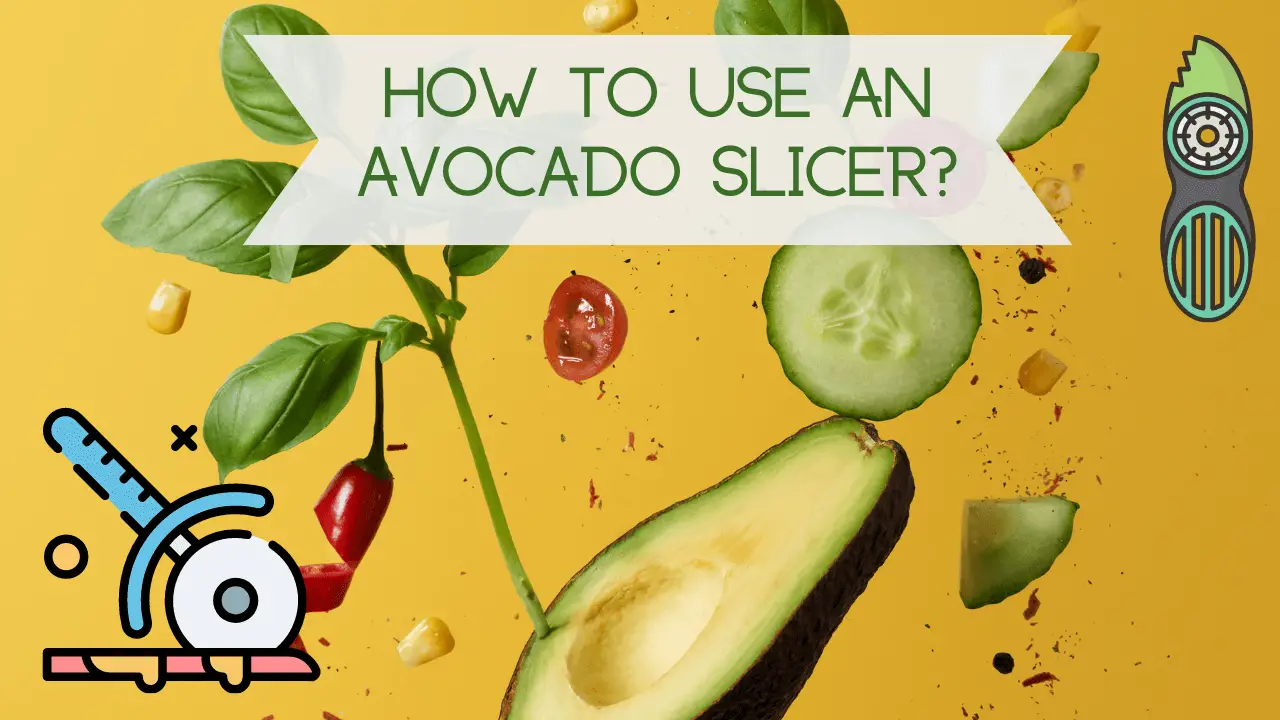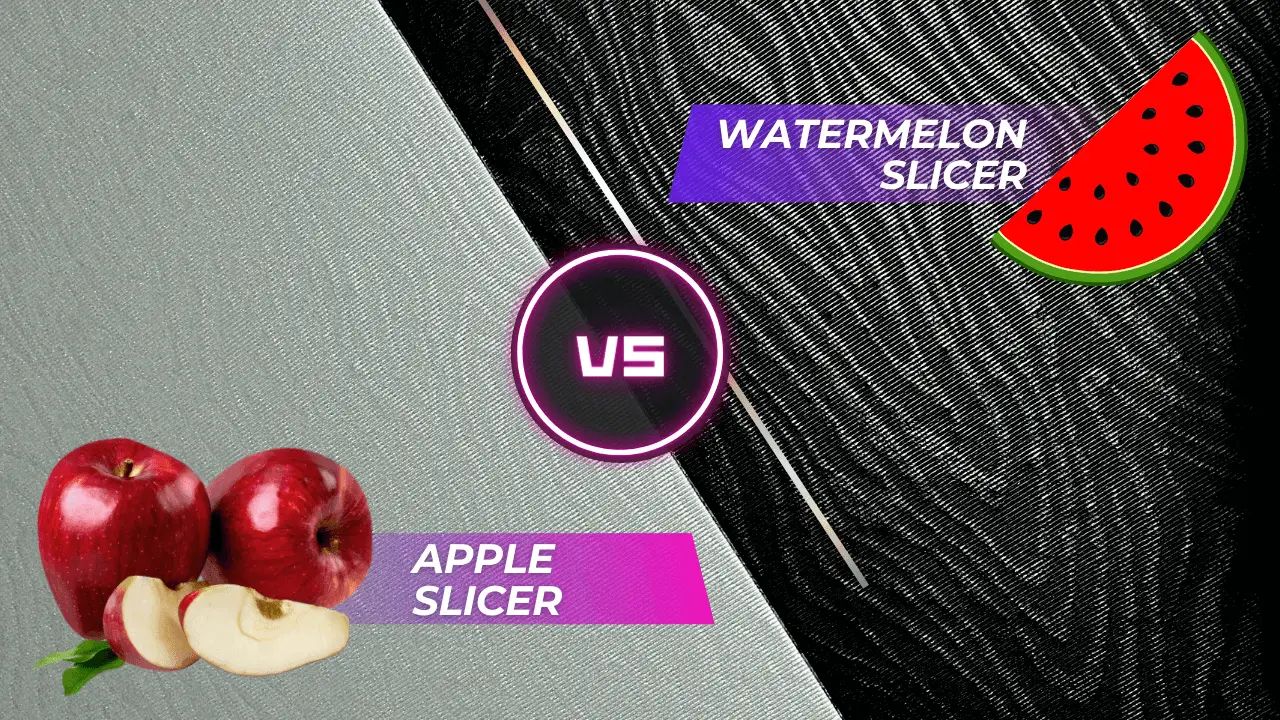Yes, you can freeze tomato slices. This is a great way to preserve extra tomatoes that may not be used immediately. To do this properly, it is important to start with ripe and firm tomatoes that have been washed and sliced. Arrange the tomato slices on a baking sheet lined with parchment or wax paper and place them in the freezer. Once frozen, the slices can be transferred to an airtight container or freezer bag and stored in the freezer for up to 8 months. When ready to use, thaw them at room temperature before adding them to your favorite recipes.
Can You Freeze Tomato Slices?

Yes, you can freeze tomato slices. Tomatoes are a staple ingredient in various recipes, but sometimes you may have an excess of tomatoes you’d like to preserve for later use.
Should Tomatoes Be Frozen Or Canned?
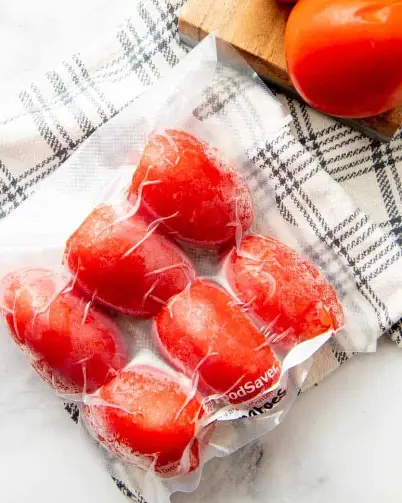
Tomatoes can be frozen or canned, depending on how you plan to use them. If you want to store tomatoes for future use, freezing is generally the preferred option. Tomatoes that have been frozen will retain their flavor and texture better than those that are canned. Freeze-dried tomatoes also work well in recipes where cooked tomatoes are used.
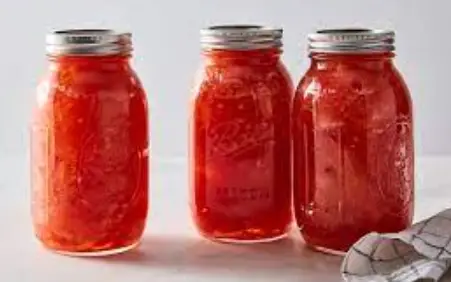
If you plan to use tomatoes for sauces, canning is the best option. Canned tomatoes produce a rich tomato sauce with a deep, concentrated flavor that lasts up to a year when stored in a cool, dry place. If you want to make salsas or chili with your canned tomatoes, they will hold up better than frozen tomatoes once they are cooked.
What Type Of Tomatoes Can I Freeze?[/su_heading]

The type of tomatoes you choose to freeze will depend on your desired outcome. If you plan to use the frozen tomato slices for cooking, select ripe Roma or plum tomatoes picked at peak ripeness. These tomatoes contain fewer seeds and will hold better shape during freezing and when cooked. For salads or sauces, any fresh, ripe tomatoes can be used.
How To Slice Tomatoes For Freezing?
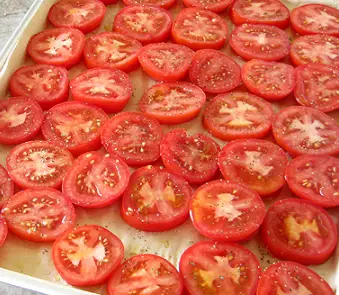
Step 1. Start by washing the tomatoes with cold water and patting them dry with a paper towel.
Step 2. Cut the tomatoes into thin slices, round or lengthwise, depending on your preference. Make sure they are all roughly the same thickness to ensure even freezing.
Step 3. Place the tomato slices in a single layer on a baking sheet lined with parchment paper.
Step 4. Place the baking sheet in the freezer for about an hour or until all of the slices are frozen solid.
Step 5. Once frozen, transfer the slices to plastic bags or air-tight containers and store them in the freezer for up to three months.
Different Ways To Freeze Fresh Raw Tomatoes
Freezing Whole Tomatoes With Peels
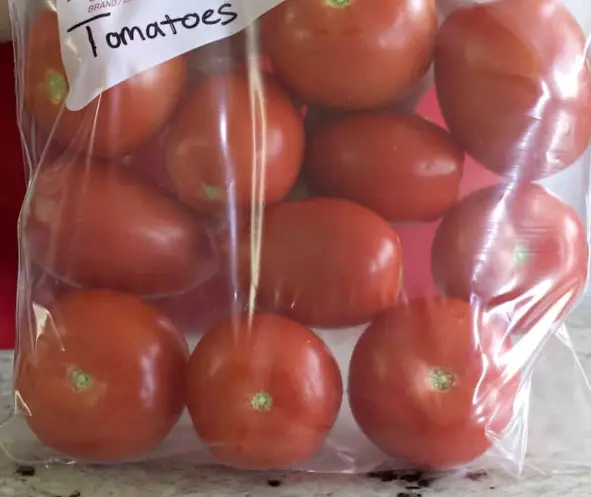
Step 1. Wash your tomatoes and allow them to dry completely before freezing.
Step 2. Place the tomatoes in a single layer on a tray or plate lined with wax paper parchment paper, leaving some space between each tomato.
Step 3. Put the tray of tomatoes into the freezer and allow them to freeze overnight.
Step 4. Once frozen, place the tomatoes in a freezer-safe container or bag and label it with the date.
Step 5. To thaw, run the tomato under cool water for several minutes until it softens enough to slip off the peel easily.
Freezing Peeled Whole Tomatoes
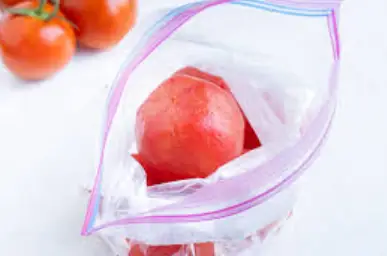
Step 1: To freeze whole peeled tomatoes, blanch them in boiling water for 1-2 minutes and then plunge them into a bowl of ice water to stop cooking.
Step 2: Pat them dry with a paper towel before placing them onto baking sheets lined with parchment paper.
Step 3: Place the baking sheets in the freezer overnight or until the tomatoes are completely frozen.
Step 4: Once frozen, transfer them to airtight containers or freezer bags and store them in the freezer for up to 6 months.
Freezing Tomato Juice
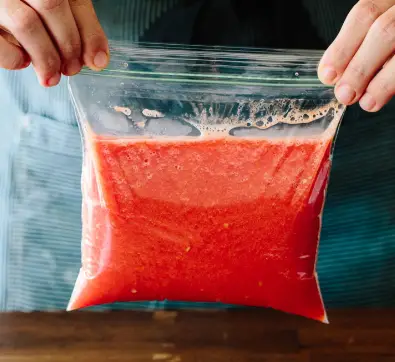
- Select firm, ripe tomatoes: You’ll want to select the freshest and ripest tomatoes possible.
- Rub tomatoes under cold water: The cold water helps to stop the ripening process and preserve the tomatoes in their best freshness.
- Cut into quarters: Now cut the tomato into quarters.
- Blend the tomatoes: If you plan to turn your slices into a sauce, the best way to prepare them for freezing is to blend them. This removes any large chunks of tomatoes and makes pouring and storing them in containers easier.
- Pour into containers: Slice the tomatoes and add them to a storage container pre-lined with parchment paper. This will make it easier to pull out individual slices when needed. Ensure the slices are not overlapping, which can lead to uneven freezing.
- Put in the freezer: Place the containers in the freezer and allow up to 24 hours for the tomato slices to freeze completely.
Advantages Of Freezing Tomatoes
- Quick processing: Tomato slices can be quickly frozen and used for future recipes such as soups, sauces, and stews.
- Long shelf life: Freezing tomatoes prevents them from spoiling or going bad quickly, giving them a longer shelf life that allows you to store and use them later.
- Convenience: Freezing tomato slices is a great way to prepare tomatoes for later use. It allows you to have fresh, flavorful tomatoes on hand whenever you need them without worrying about the tomatoes going bad before they can be used. It also eliminates the need to buy pre-sliced and packaged tomatoes, which can often be more expensive than buying a whole tomato. Freezing tomato slices also makes it easier to portion the tomatoes for different recipes, as you won’t need to worry about cutting them up before adding them to your dish.
- Freezing makes portioning easier: When freezing tomato slices, you can choose how many to freeze and easily grab one or two as needed. This way, you won’t find yourself with too much of one ingredient that will spoil quickly.
Disadvantages Of Freezing Tomatoes
- Storage space is required: Tomato slices require more space in the freezer and other frozen foods, such as vegetables like broccoli and cauliflower.
- Quality: Once thawed, tomato slices may lose some flavor and texture due to changes in the cell structure after freezing. In addition, they may take on a slightly off-taste due to the high sugar content.
- Time: Though freezing tomatoes is relatively quick and easy, you must allow time for thawing the tomatoes before adding them to a recipe or dish. This could add an extra step if you’re in a rush.
- Can be messy: Tomato slices, if frozen, can be quite messy when thawed. The natural juices in the slices may leak out as they defrost and make a mess of your kitchen counter or plate.
How Long Do Sliced Tomatoes Last In The Fridge?
When stored properly, sliced tomatoes can last up to three days in the fridge. To extend their shelf life, wrap the tomatoes securely in plastic wrap or place them in an airtight container before refrigerating. It’s important to ensure that any cut surfaces are covered and not exposed to air, as this can cause them to spoil more quickly. Tomatoes should be stored away from other foods with a stronger odor, as tomatoes may absorb those odors and affect their taste. It’s best to consume your sliced tomatoes within two or three days of cutting them to ensure they are at their freshest when eaten.
How To Store Sliced Tomatoes?
Step 1: Choose ripe and firm tomatoes for slicing – select tomatoes free from bruising or damage.
Step 2: Wash them in cold water, then pat dry with paper towels to remove excess moisture.
Step 3: Slice the tomatoes crosswise into thin slices, about 1/4 inch thick (or thinner).
Step 4: Transfer the slices to an airtight container, such as a resealable plastic bag or glass jar.
Step 5: Drizzle the tomato slices with olive oil and season with salt and pepper for added flavor.
Step 6: Place the lid securely on the container and store it in the refrigerator. The tomatoes should keep for up to 5 days.
Step 7: If freezing, spread the tomato slices in a single layer on a parchment paper-lined baking sheet and place in the freezer until frozen solid. Once frozen, transfer the slices to an airtight container or resealable plastic bag and store them in the freezer for up to 3 months.
Step 8: When ready, allow the tomatoes to thaw in the refrigerator before using.
FAQs
Can I refreeze thawed tomato slices?
Refreezing thawed tomato slices is not recommended, as it may further deteriorate their texture and flavor. It is best to use thawed slices promptly in your recipes.
Are there any recipes in which I should avoid using thawed tomato slices?
Thawed tomato slices may not be suitable for recipes that require fresh, firm tomatoes, such as salads or sandwiches, due to their altered texture.
How long can I store frozen tomato slices?
Frozen tomato slices can be stored for up to six months. However, vacuum-sealed bags can extend their shelf life to about 12 months.
Can you freeze tomatoes for Salsa?
Yes, you can freeze tomatoes for salsa. However, remember that frozen tomatoes’ texture and flavor will change after thawing, so it is best to use them as soon as possible.
Can you freeze cherry tomatoes?
Yes, you can freeze cherry tomatoes. To do so, blanch them in boiling water for about one minute before transferring them to an ice bath and then freezing them in a resealable bag. This will help preserve their flavor and texture.
Conclusion
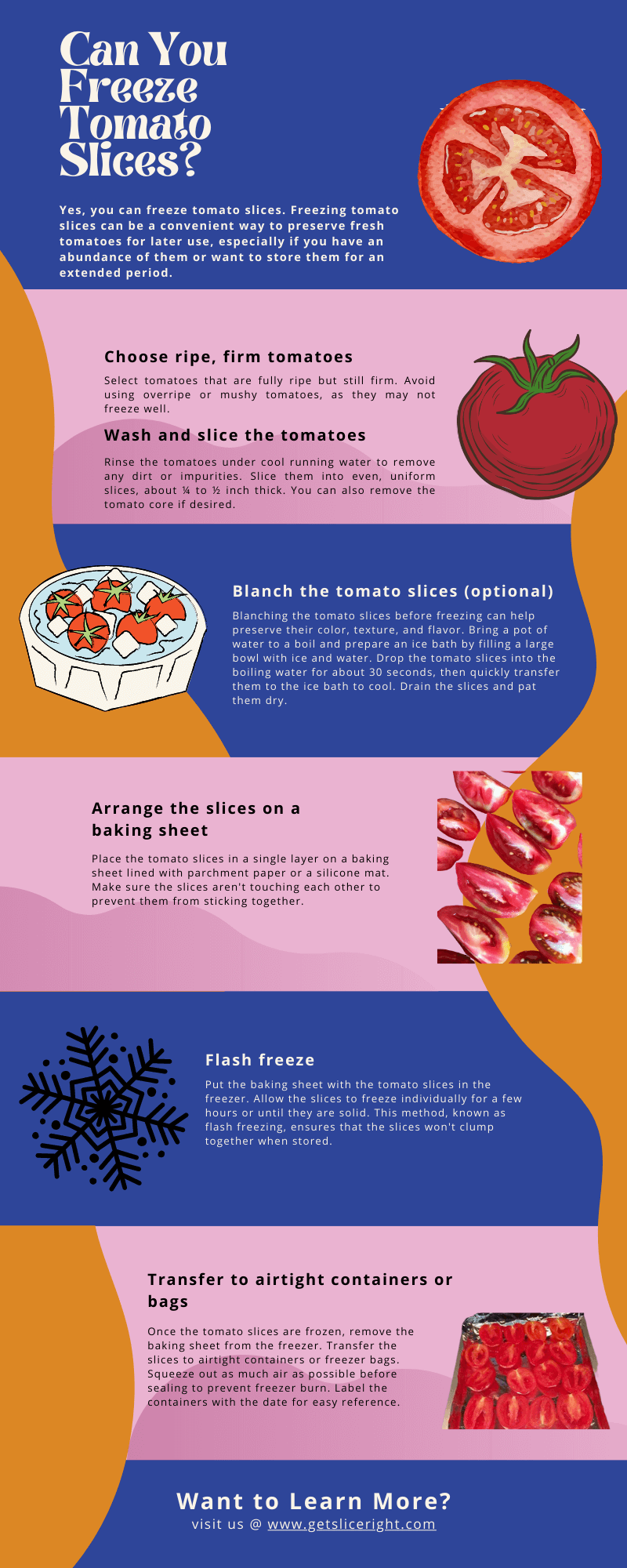
You can freeze tomato slices with relative ease. All that is required is a bit of preparation, such as slicing them into the desired size and shape, blanching them to remove any bacteria or enzymes that could affect their texture and taste when reheating, and then placing them in airtight containers before freezing. The frozen slices can then be reheated and used in many recipes or eaten as a snack. Freezing tomato slices is an easy and tasty way to preserve extra tomatoes so they don’t go to waste.

Mario Batali is a renowned author, food enthusiast, and passionate chef who has dedicated his life to exploring the world of culinary arts. With a love for sharing his knowledge and experiences, Mario has become a prominent figure in the food blogging community, inspiring countless readers with his creativity and expertise.
In addition to his culinary prowess, Mario Batali is also a talented writer with a flair for engaging storytelling. He launched his own food blog to share his recipes, cooking tips, and personal experiences in the kitchen. Over time, Mario’s blog gained a loyal following of food enthusiasts who appreciate his unique approach to cooking and his dedication to using only the finest ingredients.
Mario Batali’s passion for food and his commitment to sharing his knowledge with others have made him a true inspiration in the world of culinary arts. Through his blog, cookbooks, and public appearances, Mario continues to spread his love of food and the joy of cooking with his ever-growing fanbase.

